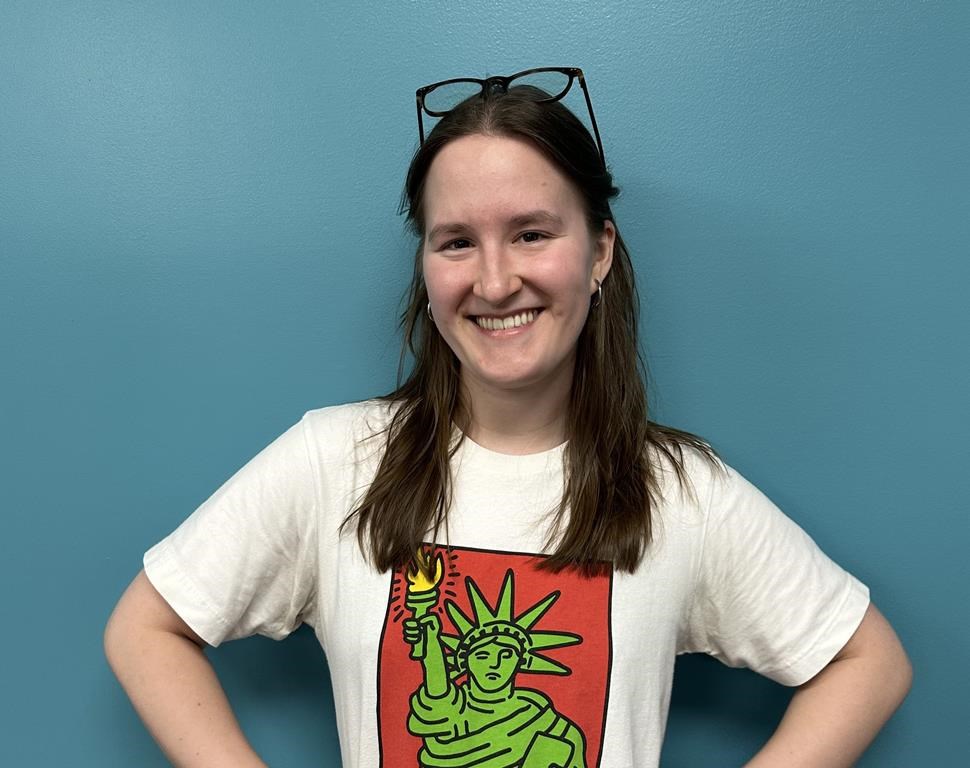Remembering what happened after she hit her head on the ice while playing hockey is tough for Meg Kerekes, but she knows how that particular headache felt — “like a one-pound weight on the spot that got hit.”

“I forget if they took me out or if I finished the rest of the game. I think I might have finished the game,” she said of the suspected concussion in September 2018 when she was playing amateur hockey during her high school years in Vancouver.
Her coach, who doubled as the person in charge of safety, suggested she stop playing and mentioned she may have a concussion.
“I didn’t go to a doctor or anything. They just didn’t let me play for two weeks,” said Kerekes, who suffered another hit to the head five months later when an opposing player slammed into her.
Her mother took her to hospital after the second incident on the coach’s orders, where a suspected concussion was confirmed and Kerekes was out of school for 10 days. She returned to “light” hockey practice, but no games, three weeks later.

Coaches and other volunteers in amateur sports need to be more aware of concussion risks, said Kerekes, who still gets a slight headache sometimes from just shaking her head while listening to music.
Recognizing and properly diagnosing concussions has also been an issue in clinical settings. A Canadian researcher hopes that will change with a new diagnostic standard he helped develop.
Noah Silverberg, associate psychology professor at the University of British Columbia, co-led an international panel’s efforts to replace “wildly inconsistent” definitions of concussion. The North American, European and Australian experts included clinician scientists such as emergency room doctors, neurosurgeons, pediatricians and those specializing in rehabilitation and sports medicine.
Silverberg’s paper outlining the new standardized criteria, co-authored by neuropsychologist Grant Iverson of the Harvard University-affiliated Spaulding Rehabilitation Hospital on behalf of the American Congress of Rehabilitation Medicine (ACRM), was published last week in Archives of Physical Medicine and Rehabilitation.

Get weekly health news
Silverberg said concussion has historically been minimized as a minor injury that does not need medical attention and is believed to get better on its own.
That often means people don’t seek medical treatment immediately, or at all, so a potential mild traumatic brain injury goes undetected, said Silverberg, who focuses on concussion recovery and treatment.

However, a concussion may not get diagnosed in an emergency room, where the focus is typically on ruling out catastrophic injuries rather than diagnosing a condition that could involve persistent symptoms and disability, he said.
There is also a long-standing concern about family doctors missing the signs and symptoms of a concussion because of little training in a field that has advanced quickly over the last few decades. There are inconsistencies in how the condition is diagnosed in specialty concussion clinics as well, Silverberg said.
A definition of mild traumatic brain injury published by the ACRM in 1993 is outdated, he said, and whether a patient is diagnosed with the condition depends on the particular criteria being used.
He said diagnosing concussions is tricky because symptoms can overlap with other conditions so health-care providers should determine how someone was injured, for example by being hit on the head while participating in a sport or in a crash.
Two or more symptoms, such as a headache and dizziness, would meet the criteria for diagnosing concussion but clinicians should also rely more heavily on observational signs such as a patient responding slowly to questions, being off balance or not knowing where they are, Silverberg said.
A clinical exam that tests for balance, memory, concentration and vision is also part of the new criteria, he said, adding a brain scan could also be ordered but does not always show signs of injury.
He pointed to a 2008 study in Australia that applied multiple sets of criteria for 12,000 children aged three to 16 and found the proportion of those diagnosed with a mild concussion ranged from seven per cent to 99 per cent. Silverberg said such a wide range means there’s a huge barrier to harmonizing findings from studies that compare “apples and oranges.”
“I think there has been widespread discontent with the existing criteria among health-care providers of all kinds. Different settings all stand to benefit from getting on board with this unified, evidence-based, consensus-based criteria.”

The new criteria also emphasize the need for awareness about intimate partner violence.
“Being assaulted by your partner is an alarmingly common way to get hurt,” Silverberg said. “These are predominately women victims and predominantly not having a single injury but multiple injuries with repeated assaults over months to years. And they’ve been left out of the conversation around the brain injury research until pretty recently.”
Stacey Ashton, manager of shelter services and affordable housing at YW Calgary, said the facility that offers shelter space to women for 21 days recently started screening for mild traumatic brain injuries that could have occurred because of domestic violence.
“The big piece, too, is going to be around building awareness for women who are experiencing violence, that they could have a potential brain injury. I think that correlation is poorly understood by a lot of people,” Ashton said.
New criteria or clinical guidelines typically take several years to be universally adopted as awareness increases but that could happen more quickly in some cases if insurance companies require a verified diagnosis according to the latest definition of a condition before paying for a specific treatment, Silverberg said.
Canadian Press health coverage receives support through a partnership with the Canadian Medical Association. CP is solely responsible for this content.







Comments